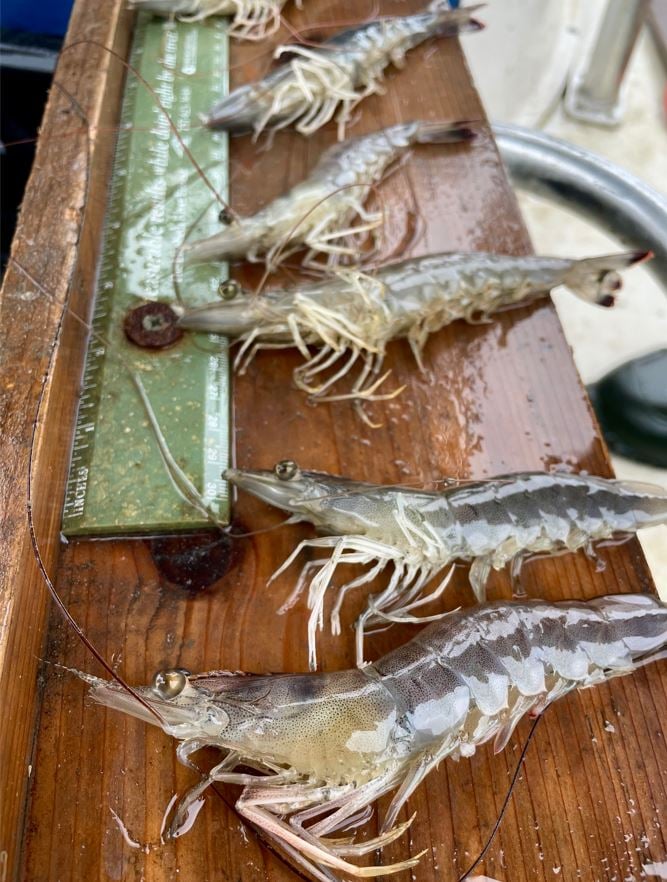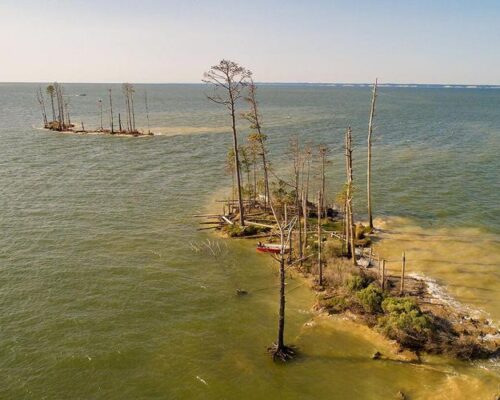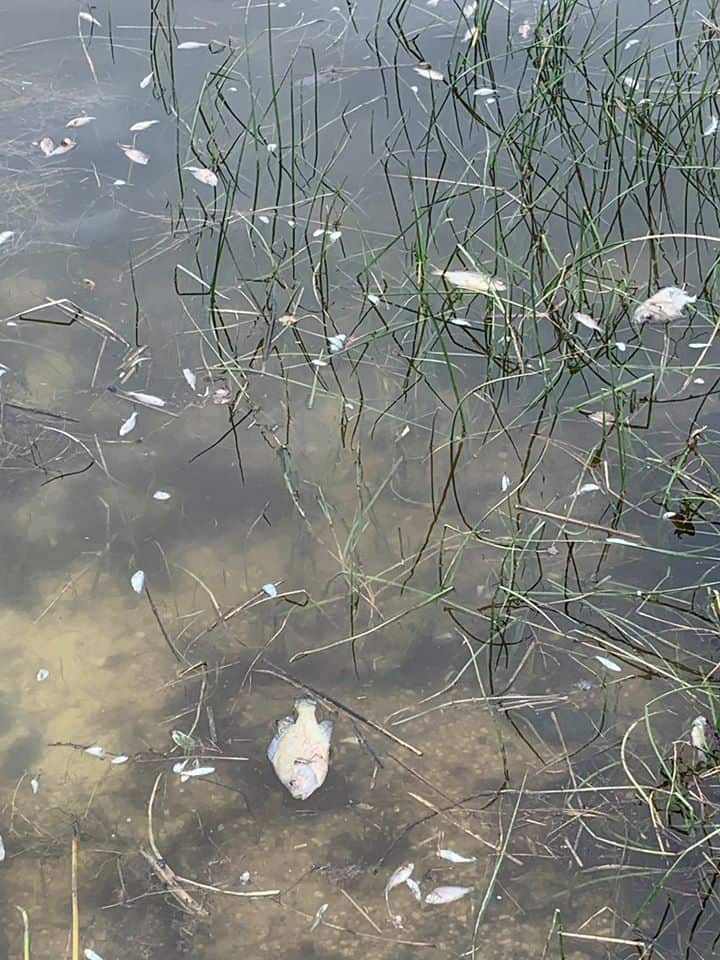Climate change is usually discussed in a negative manner. However, there can be occasional silver linings due to a warming climate. In Virginia, scientists believe warming waters are allowing shrimp (the kind served in restaurants) to spread north from the Carolinas into local waters. Their numbers have increased to the point where they have been captured inland, and they support a small commercial fishery.
The Elizabeth River Project (ERP) reports that it recently discovered numerous white shrimp through the Lafayette River, the northern branch of the Elizabeth. The shrimp were pulled up during ERP’s biannual trawl survey, conducted with the Chesapeake Bay Foundation.
“We have been doing this survey for over 10 years and over the past five years the number of shrimp we catch just keeps getting higher,” says Joe Rieger, Deputy Director of Restoration. “It is exciting to see these shrimp at such high numbers. In one trawl, we picked up over 50 shrimp.”
Watermen started to notice the shrimp in the 1990s. As their abundance grew, the Virginia Marine Resources Commission (VMRC) stepped in and issued regulations. The VMRC decided to issue 12 permits, on a lottery basis, to commercial shrimpers. The permits were taken and the experimental fishery is underway. Recreational shrimping is also permitted.
Hearing of the increased shrimp abundance, Chesapeake Bay Magazine contributor Robert Gustafson took it upon himself to learn how to shrimp recreationally, and says you can do it, too. He shares what he learned in our June 2021 issue.
The most popular shrimp in Virginia, white shrimp are also known as green-tail shrimp due to the green tint on their tails. They have 10 pairs of walking legs and 5 pairs of swimming legs. They can grow as large as 7 or 8 inches. Until the early 1900s, they were not popular as food for humans, and were more often used as fertilizer. Today, they are extremely popular with diners and are also eaten by a wide variety of predators in the sea.
In Virginia, they are most abundant in the fall and early winter. While the commercial harvest takes place in the ocean, shrimp are also showing inshore in Virginia. In addition to the Elizabeth River system, shrimp have also become regulars in the Poquoson River.
One concern with commercial shrimping is bycatch. In North Carolina, for example, trawlers drag nets that can be 55 feet wide. They can deploy this gear almost anyplace day or night. The bycatch is sometimes significant, because the nets catch finfish as well as shrimp. When the crews are culling their catch, there can be a National Geographic-style melee of seagulls, pelicans, sharks, dolphins, false albacore, and other fish lined up at the buffet table. Much of the bycatch are small spot and croakers.
“We don’t really have that issue in Virginia,” said Chris Moore, Senior Regional Ecosystem Scientist at the Chesapeake Bay Foundation. “In Virginia, the nets are only 16 feet wide. They can only be deployed for 30 minutes at a time during the day. Bycatch is not a big problem with this gear fished in this manner. The VMRC did a good job balancing harvest and sustainability.” The Virginia program so far is profitable for the watermen but also safe for the resource. Commercial harvest of the shrimp is likely to grow, but growth will be careful thanks to the VMRC and knowledgeable watermen.
“What remains to be determined is how these shrimp will influence other fish and fisheries,” said Moore. “This new source of food will probably influence game fish and perhaps their migrations as well.”
If you want to partake of this bounty, the Virginia Beach commercial fleet unloads around the 300 block of Winston Salem Avenue every afternoon. Signs are posted. Because the quantity can vary greatly day-to-day, it is best to connect with your favorite shrimper before driving down. You can follow the shrimpers on social media or you can sign up for text messages. That way, you will know when to hit the docks for the freshest shrimp available, unless you catch your own. Use your favorite search engine to look for “fresh shrimp Virginia Beach.”
–Kendall Osborne




